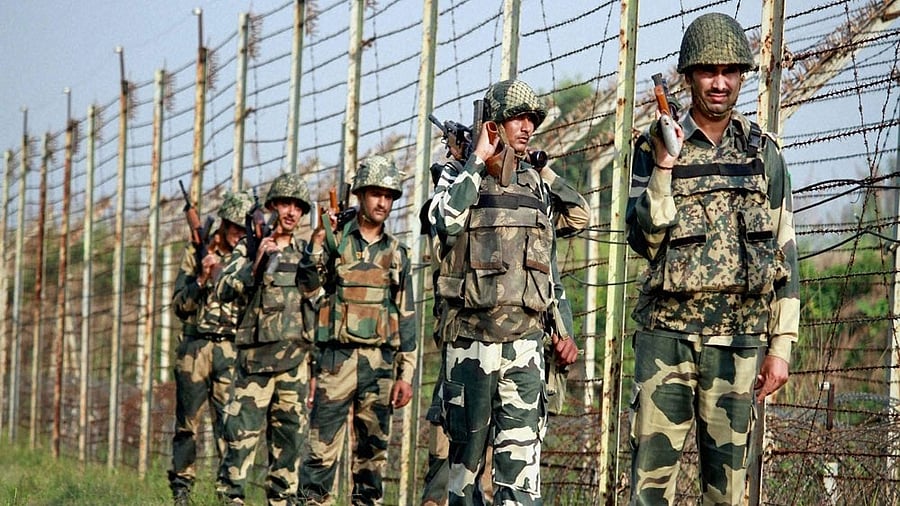
The Home Ministry has decided to scrap the Free Movement Regime between India and Myanmar.
Credit: PTI Photo
The decision of the Ministry of Home Affairs (MHA) to scrap the Free Movement Regime (FMR) between India and Myanmar and fence the entire border has human rights repercussions. Ostensibly aimed at demonstrating the Centre’s commitment to ‘secure our borders’ and ‘maintain the demographic structure’ of India’s northeast, it overtly represents a closed border approach in the world of forced migration.
The Indo-Myanmar Border (IMB), a colonial legacy until the 1969 boundary agreement between the government of the Republic of India and the Union of Burma (now Myanmar), passes through the north-eastern states of Mizoram, Manipur, Nagaland, and Arunachal Pradesh. The FMR, part of India’s Act East policy, was implemented in 2018. Today, it is undeniable that the IMB is susceptible to crime, drug trafficking, illicit and informal trade, and the import of arms. Meitei groups based in the Imphal valley have persistently called for border fencing, alleging that tribal militants frequently enter India through it.
However, the Kuki-Zo community contends that fencing the IMB will sever ethnic ties and divide the Zo ethnic people between the two countries, who have shared a cultural and ethnic affinity for decades as they originate from the same ancestral lineage. Organisations like Mizo Zirlai Pawl (MZP), the Central Young Mizo Association, and the United Naga Council oppose the fencing. Meanwhile, outfits like Shiv Sena Manipur State Unit have submitted a memorandum to the prime minister, urging the completion of proper fencing along the entire 398 km long international border between Manipur (India) and Myanmar.
The closure of this 1643 km long international border with Myanmar violates the principle of ‘non-refoulement’. While India is not a signatory to the 1951 UN Convention on the Status of Refugees, it is bound by the ‘non-refoulement’ principle in customary international law, ensuring that no one should be returned to a country where they would face torture, cruel, inhuman, or degrading treatment or irreparable harm. Following the military coup of February 1, 2021, in Myanmar, thousands of its fleeing citizens, across religious and ethnic lines, have crossed over to the Indian side, seeking protection and shelter. While the Manipur government adopts a strict and hostile attitude, the Mizoram state government has been more welcoming. Some Myanmar refugees have even travelled to New Delhi, where the office of the United Nations High Commissioner for Refugees is located, seeking asylum and official refugee status.
India, while safeguarding its national security, also has an obligation not to turn away people fleeing for their lives. India’s independence in 1947 was marred by a bloody cross-border displacement of thousands of people during partition. But since its birth, India has stood proudly on the world stage as a generous host and receiver of refugees, rather than one that creates them. From Tibetans to Sri Lankan Tamils, India has hosted varied refugee groups for decades. Today, nearly 50,000 refugees and asylum-seekers are registered with UNHCR India. According to UNHCR statistics, in India, asylum-seekers and refugees primarily live in urban settings alongside their host communities (46% are women and girls, and 36% are children). Besides, nearly 18,000 Sri Lankan refugees have also returned voluntarily with UNHCR’s assistance.
The Indian state should focus on addressing the economic, educational, and health needs of neglected and vulnerable populations living along the IMB to keep them away from the lure of drug trafficking; prioritise infrastructural development at the border region, regulatory mechanisms, effective integrated check posts (ICP), and formalisation of trade. The harsh and tough terrain of the IMB necessitates selective fencing in specific regions rather than complete fencing, with designated multiple entry points and strict vigilance by border guards. The political instability inside Myanmar continues, and its citizens will continue to look for safer options outside. They should not be turned back on humanitarian grounds.
The Indian nation-state, despite the absence of a national legal framework governing refugees, has welcomed refugees from across the world, upholding the spiritual principle of ‘Vasudaiva Kutumbhakam’ (the world is my family). Even the Citizenship Amendment Act proposes fast-track asylum granting to Hindu refugees from South Asian neighbouring countries. Unfortunately, it thus discriminates between asylum-seekers on the grounds of religion, while the UN definition of a refugee is premised on religious persecution. The idea of India as one that obsesses with keeping ‘outsiders’ out is neither inclusive nor desirous.
(The writer is an alumnus of the Refugee Studies Centre, University of Oxford, and is with Jain (deemed to be) University, Bengaluru)